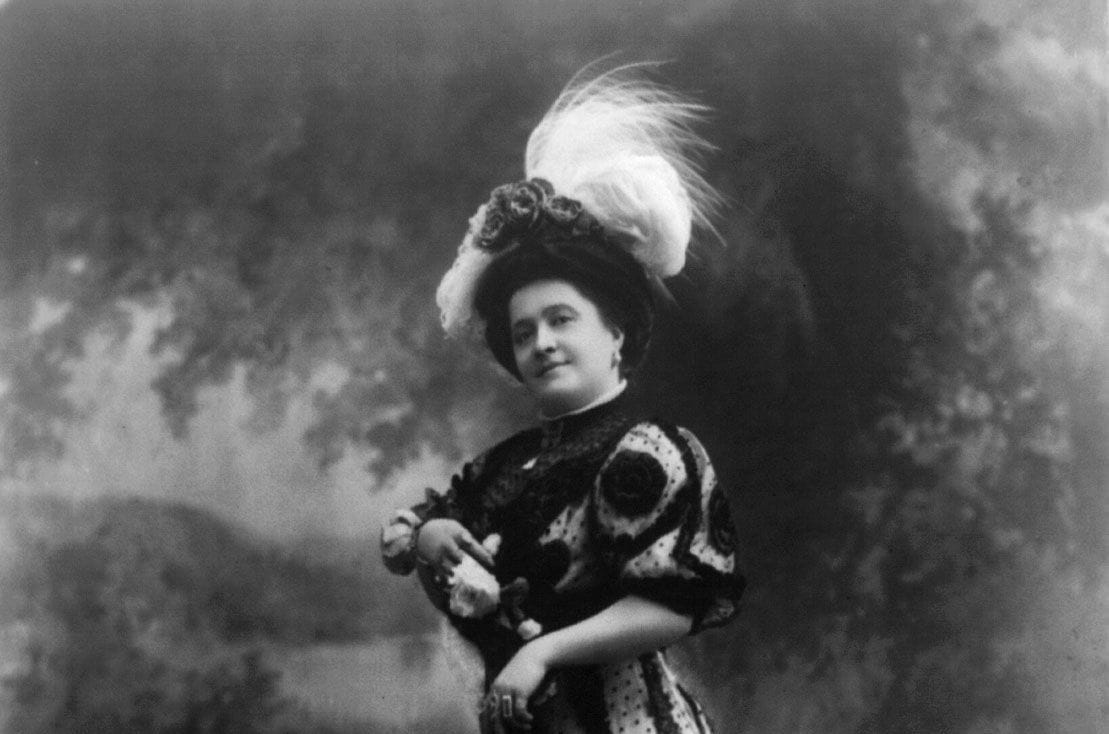Luisa Tetrazzini: Traversing Operatic Heights

Luisa Tetrazzini was one of the most famous Italian sopranos of the 19th-20th centuries. She began singing at the age of three, which is perhaps why her father compared her to one of the great coloratura singers of the 19th century, Adelina Patti, who had also begun performing as a child. Tetrazzini first studied with her elder sister, Eva, who was a prima donna soprano and had made a name for herself internationally. Whilst helping at home, Tetrazzini was known to practise entire acts of operatic roles. She began actual studies at the age of 10 with Giuseppe Ceccherini.
In 1890, at the age of 19, Tetrazzini made a surprise debut at the Teatro Pagliano in Florence as Ines in L’Africaine. Next, she sang in Rome and toured with much success throughout Italy, adding to her repertory all the famous roles for coloratura soprano. She also sang in St. Petersburg, Madrid, Buenos Aires and Mexico.
Tetrazzini first sang in Lucia di Lammermoor in Buenos Aires on 21st November 1892. It was her favourite opera. By the time of her fourth season in the Latin American city, she was engaged to receive 5,500 liras per month.
Tetrazzini made her Covent Garden debut on 2nd November 1907 as Violetta in La traviata and caused a sensation. “She came like a bolt from the blue and swept the musical world flat,” a critic wrote. She received 20 curtain calls. She returned to London for every summer season from 1908 to 1912 singing Lucia, Gilda, Rosina, Amina, Lakmé, Leïla (The Pearl Fishers) and the Queen in Les Huguenots. Her success was welcome at a time when Nellie Melba had begun to relinquish her brilliant parts.
After her success in London, she was engaged by Oscar Hammerstein for the Manhattan Opera House where, on 15th January 1908, she repeated her London triumphs in the role of Violetta. She appeared in three consecutive seasons at the Manhattan Opera House, in 1911-12 at the Met and in 1911-12 and 1912- 13 in Chicago. She also appeared in most of her London roles as well as others in which London would never hear her: Rossini’s Mathilde (William Tell); Bellini’s Elvira; Donizetti’s Linda, Adina (L’elisir d’amore); Marie (La fille du régiment). These pre-war years were the climax of her career. Thereafter she made many concert tours, appearing for the last time in New York in 1931 and in London in 1934. In later years, Tetrazzini taught in Milan and had an excellent pupil in Lina Pagliughi. Unfortunately, at the time of her death on 28th April 1940, she had exhausted her resources and had to be buried at the expense of the state.
Between 1908 and 1914, the years she was in her prime, Tetrazzini recorded extensively. Her recordings of ‘Una voce poco fa’ (The Barber of Seville), ‘Polonaise’ (Mignon) and ‘Ah! non giunge’ (Sonnambula) rank among the most brilliant ever made. Tetrazzini possessed technical gifts of the highest order, a dazzling ease and agility in virtuoso passages and a tone of warm, clarinet-like beauty.
One of the best descriptions of her voice was penned by a rival coloratura, her friend, Frieda Hempel, “What a thrilling unforgettable voice. It was so powerful and so free. The tones were round and strong, not even losing their fullness when, after swelling a note, she diminished it in a pianissimo that had real body and quality all the way through. Her technique was dazzling. Even the most difficult things she seemed to do without trying—her descending scale had to be heard to be believed! Above all, there was something in the way she sang that swept you off your feet. Tetrazzini was a natural musician with a remarkable gift for improving cadenzas which always sounded right, even though she might do them differently each time. And big though she was, there was a marvellous daintiness in her vocal style.”
This voice is richly recorded in a set of five LPs, which are part of the collection. At the NCPA, readers can also peruse her autobiography, and biography, Luisa Tetrazzini: The Florentine Nightingale, by Charles Gattey.
By Jimmy Bilimoria. This piece was originally published by the National Centre for the Performing Arts, Mumbai, in the November 2023 issue of ON Stage – their monthly arts magazine.





